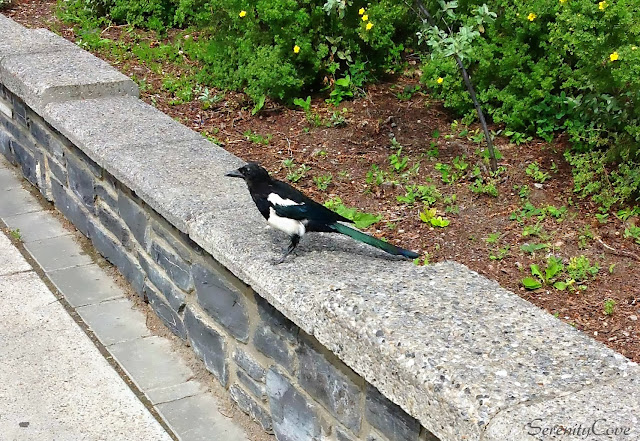Athabasca Falls
After spending the night in Jasper, we headed back down the Icefields Parkway on our way to the Columbia Icefields where we will take a tour out on a glacier.
First, we stopped to view a few gorgeous waterfalls along the way.
A powerful, picturesque waterfall, Athabasca Falls is not known as much for the height of the falls (80 feet) as it is known for it's force due to the large quantity of water falling into the gorge.
The Athabasca River thunders through a narrow gorge where the walls have been smoothed and potholed by the sheer force of the rushing water carrying sand and rock.
Next we stopped at the Sunwapta Falls which were not as massive as the Athabasca Falls but just as beautiful.
The Columbia Icefield is located on the boundary of the Banff and Jasper National Parks. This is one of the largest accumulations of ice and snow south of the Arctic Circle and covers an area of 233 sq. miles and receives up to 275 inches of snow per year. The eight glaciers of the Icefield provide meltwater that eventually flows into the Arctic, Atlantic and Pacific oceans.
Snow Dome Mountain and the Dome Glacier from the Icefields Centre.
The summit of Snow Dome is the hydrographic apex of North America. While glaciers in the Icefields melt into different oceans, water from this point flows to three oceans. So for a snowflake drifting down onto Snow Dome, three destinations are possible. If it falls on the western side of the peak, it is headed to the Pacific. A few inches north, it's going to the frigid Arctic Ocean. A bit east, it will eventually end up in the Atlantic.
Mount Athabasca and Sunwapta River. Mount Andromeda is the mountain to the far right.
The Athabasca Glacier is one of the major attractions of the Jasper National Park and is the most accessible glacier in the icefield.
To give you an idea how massive this glacier is, the two dots in the middle of the photo are two of the Snow Coaches and at the bottom of the picture you can see hikers approaching the glacier.
The Icefields Centre is across the road and this is where we start the tour.
First we are ushered onto a bus that takes us up a lateral moraine to the staging area for the Ice Explorers.
The Ice Explorer takes us down a very steep slope out onto the middle of the glacier.
After being warned to stay within the designated areas, we were given 20 minutes to wander around on the glacier.
It was extremely cold and the wind was fierce, I think I lasted all of about 10 minutes before I retreated back to the toasty warm bus. I could barely stay upright on that slick ice!
Looking back to the Icefield Centre. That road doesn't look bad from here, but seriously it felt like it was straight up and down!
This glacier is approximately 3.7 miles long and covers an area of 2.3 sq miles and is 1000 feet thick! To give you an idea how deep that is, the Eiffel Tower is 1,063 feet tall.
The glacier is constantly moving, like a flowing river of solid ice.
While the Athabasca Glacier is huge in size, it is slowing diminishing having receded just under a mile in the last century. At one time this area back to the road was covered by the glacier.
The shrinking glacier has left behind a moonscape of rocky moraines. As glaciers slowly move along, they accumulate rocks, dirt, gravel and clay. As the glacier melts this debris is deposited as land formations known as moraines. There are several types of moraines. A terminal moraine is the farthest most point a glacier reached before it started it's retreat. A lateral moraine is what is pushed aside as the glacier advances and retreats.
Another view of both types of moraines.
Walking on a glacier can be very dangerous. Moulins, holes worn by melting water, spiral down into the glacier and there are deep crevasses on the glacier that are difficult to see and many people have lost their lives falling into them.
Collecting glacier water.
Apparently I'm now ten years younger because I drank glacier water. Obviously time will tell, but it's not looking promising so far.
Heading back to the Icefield Centre.
to be continued.....









































































